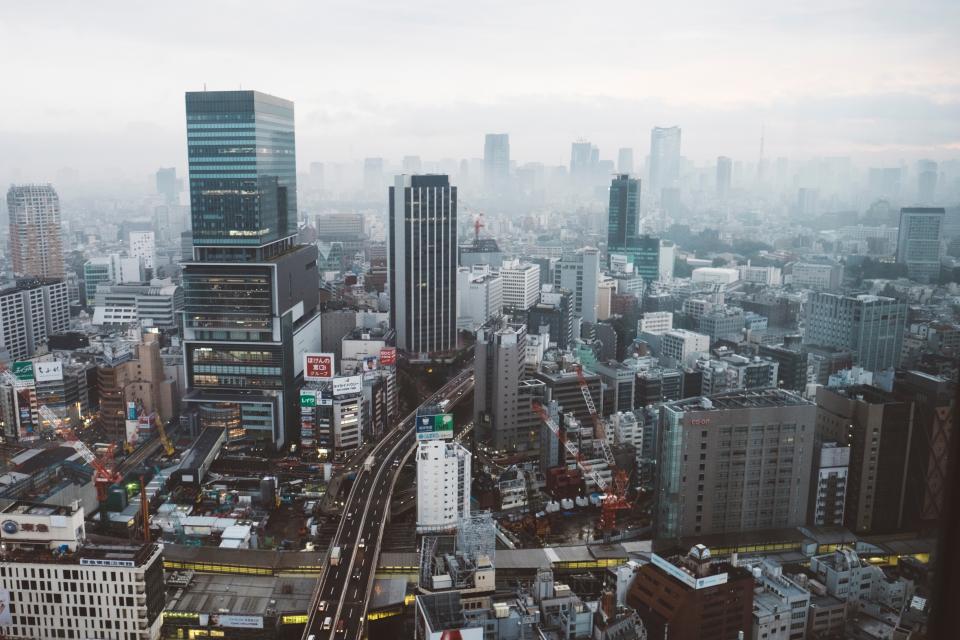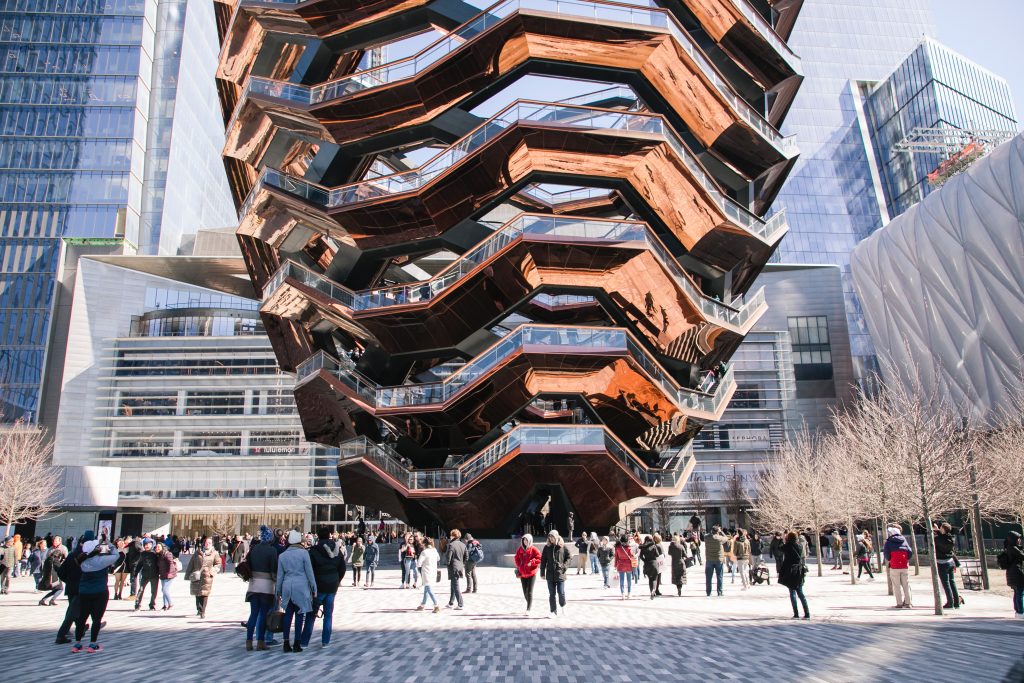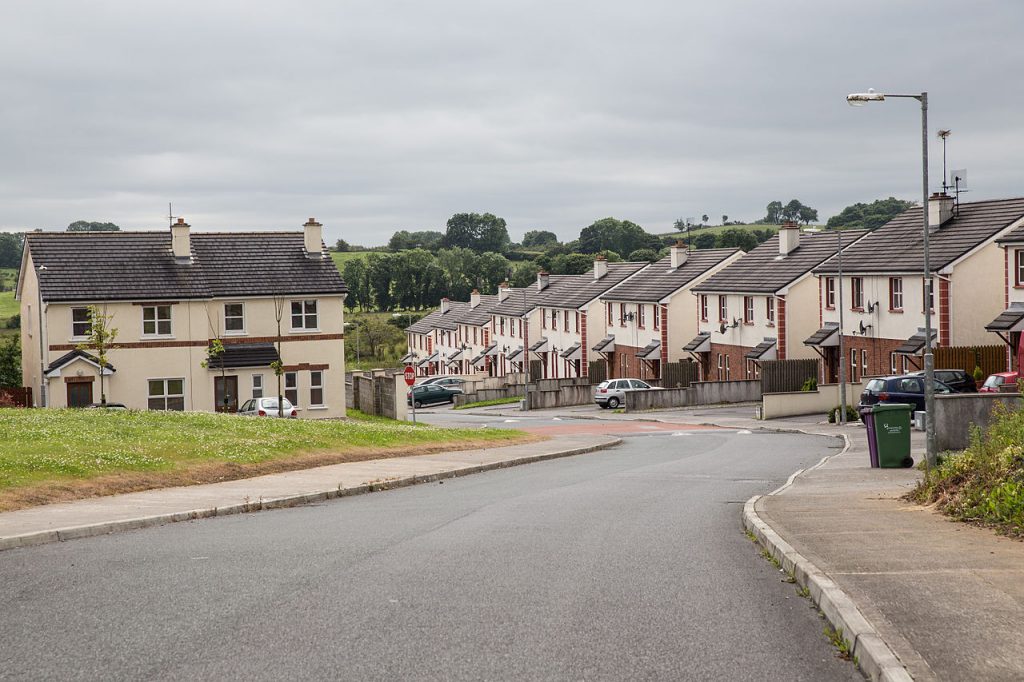‘Architecture is in a sort of crisis’ says architect, David Chipperfield; honestly, I couldn’t agree more. Considering the current state of our sociopolitical climate, it is as though the entire world is in crisis. With the looming threat of climate change at the forefront of so much current discourse, it is quite jarring to come across a scheme as unapologetically narcissistic as the Burj Jumeira, a super tall skyscraper currently under construction in Dubai. Visualisations of the scheme show the main tower emerging from a base fashioned to mimic the client’s fingerprint. The tower’s façade and interior viewing platforms will be lined with digital displays, and it’s already been dubbed ‘a new icon in Dubai’s skyline’.
At this point, I think we generally expect most designs out of Dubai to be as extravagant as they come, but something about this particular scheme didn’t sit well with me when it was first announced. The concept is so flamboyant that it wouldn’t be entirely out of place in a Bond film. This isn’t inherently negative, but when the issue of climate change is so prominent and affordable housing concerns worldwide are at a critical level, these types of projects appear even more irresponsible and shallow.
There’s certainly a case to be made for architecture reflecting the technological advancements of our time—Dubai is a leader in experimental design and progress and it would be counterproductive to approach all architecture in a standardised manner for increased functionality. Architecture has never been a ‘one size fits all’ discipline, and, as an inherently creative practice, it is to be expected that unique and distinctive designs emerge. Nevertheless, I’m always wary of the social and ecological costs of a scheme like the Burj Jumeira. I’m still yet to find any promotional materials or information that mention sustainable design elements.

This criticism isn’t just limited to Dubai either; the highly controversial ‘Tulip’ by architectural practice, Foster + Partners, was branded an ‘abomination’ and, aptly, something more appropriate for a Dubai setting by detractors. Approval for the scheme was granted but, within a matter of months and amidst increasing complaints, abruptly scrapped by the Mayor of London. It wasn’t the first proposed structure in London to be decried as ‘lacking any depth or critical awareness‘, and it certainly won’t be the last.
I can concede that it is maybe a little unfair to write these admittedly beautiful skyscrapers off as nothing more than a way for developers to stroke their own egos, but schemes like these do little to change public perception of architects as ‘court jesters to the rich’. Yes, teams of talented, qualified professionals work on mega-structures like these, so why does it still feel so out of touch from our current reality? This disconnect is presented glaringly in the design of the Burj Jumeira, which is more spectacle than serviceable, and it undermines the urgency with which we need to address the climate and housing crises.
The increasing presence of these unique and, more significantly, expensive skyscrapers in our cities also presents a more insidious problem. The gentrification of urban spaces has been a significant contributing factor to a social crisis within the sector. Cities are becoming increasingly inaccessible for disenfranchised communities like the poor and disabled, as incoming developers arguably prioritise profits over the needs of the general populace.

New York’s multi-million-dollar Hudson Yards development was recently subject to scrutiny after ‘Vessel’, its sixteen-storey sculptural centrepiece was unveiled. Comprised of hundreds of flights of stairs and little else, the landmark couldn’t be more exclusionary if it tried. For those with mobility issues, there’s no recourse; the single, narrow lift stops only on select floors and the physical labour of climbing all 2500 ‘[stairs] to nowhere’ amounts to little more than views of the new million-dollar condos and luxury retail outlets adjacent.
It is no wonder that ‘Vessel’ has been parodied relentlessly on social media, an easy target for memes and think-pieces. While promotional materials hail the scalable sculpture a ‘three–dimensional public space’, critics and the public alike accuse it of being anything but. The new landmark seems to function as nothing more than a commodification of unused land, an opportunity to milk more money from an already obscenely priced development. Policed by private security to prevent loitering, it’s a public space that’s not so public at all.
The $25 billion development of one of the most expensive neighbourhoods in the world seems to be just another in a long list of cynical cash-grabs by wealthy developers to provide the most affluent with their own personal playground. There is nothing ‘neighbourly’ about the overly expensive development, which is only accessible to the wealthiest minority, remaining largely empty due to the enormous price tag attached. Meanwhile, ordinary working-class citizens are forced to live in subpar, and sometimes even hostile environments, forced into debt or government subsidised housing just to keep afloat.
Developers of the scheme haven’t taken kindly to the claims of elitism that have plagued Hudson Yards, refuting criticisms by highlighting the fact that high-street chains are present in the otherwise luxury shopping destination. This bizarre claim just illustrates how out of touch can these parties are. What difference does the presence of an H&M really make, if the cost of a new apartment locally ranges from $4 to $32 million? Why are we handing the reins of urban planning over to the uber-rich, who prioritise the needs of the few over the many?

Architecture is about design, innovation, but it is also a business; in our current, late-stage capitalist society, this is becoming increasingly evident. It is a recurring narrative that people need safe, affordable housing that also values the environment at its core. The recent tragedy of Grenfell Tower speaks to exactly what can happen when profits are placed above people. Despite this, the radical shakeup that the sector needs is still nowhere in sight. While significant strides are being made in ecologically responsible housing, this is not being implemented on a large scale. Instead, significant time, money and press are wasted on flamboyant designs with familiar names attached but very little depth behind them.
Architects talk a good game when it comes to sustainability and accessibility, but it is about time that they started walking the walk. We don’t just need to preserve the environment, we need to start actively repairing it. The climate and housing crises disproportionately affect the poorest communities, and this inequality is the reason why the reception to these audacious development schemes will only ever be increasingly negative. When low-income citizens are faced with the prospect of increased costs of living and major carbon emissions in their cities, what else could you expect of their reactions to a multi-million-dollar monument that acts as an excuse to hike up rent in the surrounding vicinity and just generally infringe on the public?
In the face of all this, the Burj Jumeira seems more and more like a lesson in wastefulness.
It is the exact type of needless decadence that all architects should advocate against. The digital façade, water fountains that will likely run twenty-four hours a day and other luxurious amenities seem almost like an intentional snub, not just because it is a waste of resources but because it continues to promote inequality. Human well-being is an integral part of achieving a sustainable future, just as important as cutting emissions and repairing the damage of human activities on our ecosystems. It is no longer enough for architects to ‘just fiddle around with what the market gives [them]’—they need to be activists as well as designers and start seriously integrating sustainable design into the art of architecture.
Architects tend to want to change the world; I believe that most are well-intentioned and principled. However, at this point, it’s not enough to be just principled without action. This may be difficult, painful even, but now more than ever, we need a drastic change.

The onus of sustainability doesn’t fall solely on the shoulders of architects; there are entirely political, economic and societal systems that need to be overhauled, but it is still their duty to commit fully to producing architecture with as little environmental impact as possible. We can learn a lot from poor and indigenous communities, many of whom live and build using renewable methods, and start reconsidering the embodied energy that goes into our construction as much as the in-use costs. This also means choosing to give up materials that we now know contribute to global carbon emissions.
There isn’t a definitive solution to these escalating crises. Architects don’t have unlimited power, and when given the choice between rejecting a commission or working with the client to make it as ‘green’ as possible, many would likely choose the latter. We don’t have time to wait for entire systems on which our society is based to be radically transformed before we start trying to mitigate the environmental impacts of our current construction methods. I won’t pretend to have all the answers. But architects are the leaders of the construction community — isn’t there a moral obligation to use this status to reinvent how we build and lead us away from the brink of environmental and societal collapse, rather than towards it?


